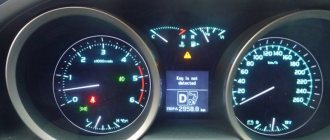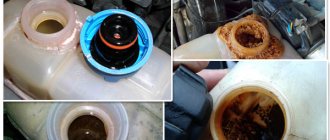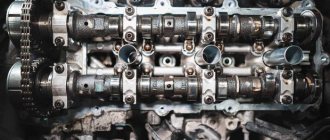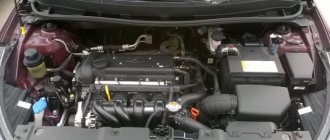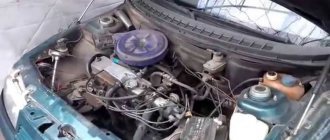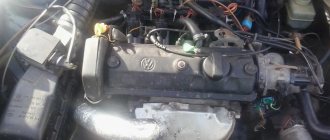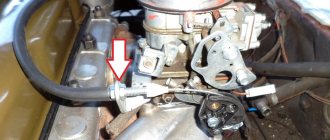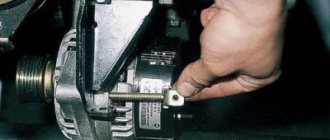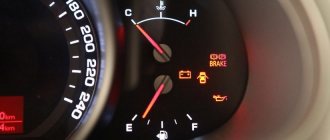Cars from domestic manufacturers have always had plenty of problems. Yes, in the early and mid-80s of the last century, the Russian automobile company AvtoVAZ made a splash with its technologically equipped and affordable copies - and nothing has changed since then. True, nothing has changed in the bad sense of the word.
The same technologies are used: low-power, albeit high-resource engines, primitive design and interior, low-quality interior materials, unpleasantly surprising safety test results. And this is not to mention the fact that the list of problems remains the same, despite the fact that every few years each model range undergoes a deep restyling. And this, for a second, is in 2022. In fact, the VAZ is only suitable as a means of transportation “from point A to point B”, because comfortable movements on it are completely excluded.
Thematic forums are constantly replenished with new problems of the so-called pelvis valves: either the turn signals stopped turning on, or the stove broke for no reason, or even you can’t go anywhere with your iron friend - it doesn’t want to start.
What to do if dips are observed when you press the gas pedal on the VAZ 2114 injector
Sometimes motorists are faced with such an infrequent, but extremely unpleasant phenomenon as failures when pressing the gas pedal on the injector of a VAZ 2114. In short, such failures are the lack of a quick response from the car engine to pressing the gas pedal. We will talk about why they can arise and how to eliminate them on your own in today’s article.
For what other reasons does the car take a long time to warm up to operating temperature?
- The reason for the early start of the radiator is incorrect ECU settings . Here it all depends on the settings of your firmware, but by installing the BC (on-board computer), you can adjust the temperature at which the fan turns on (not all BCs have this function). On a stock VAZ 2114 2113 2115 the fan should turn on at 105 degrees.
- A faulty thermostat can also be the cause of long warm-up (but we wrote about this above). It can constantly circulate coolant in a large circle, which is why the engine takes a long time to warm up. To check the thermostat, read the article: VAZ thermostat.
- Consequences of illiterate chip tuning . In principle, this and the second point can be linked together, because again, the reason lies with the ECU settings.
Didn't find the information you are looking for? on our forum.
Features of failures
What all pedal failures have in common is that when you press the pedal, the engine does not respond in a timely manner, and therefore does not gain momentum. Such failures can appear in different situations and the behavior of the machine can also be different.
- Short dips while driving (no more than a couple of seconds) followed by a quick response from the engine.
- Dips during acceleration.
- Dips at idle speed.
- Prolonged failures, as a result of which the car stalls.
- Jerking, characterized by a series of alternating short dips and subsequent jerks.
There are not many reasons for this phenomenon, so finding and eliminating them will not be difficult for an experienced driver.
In 99% of cases, failures can be caused by one of the following reasons:
- clogged injectors;
- damage to the fuel system;
- injector damage;
- wear of temperature sensors;
- errors in the ECU;
- failure of spark plugs.
If you notice even minor changes in the “behavior” of the engine, you should end the trip as quickly as possible and visit a car service center or perform independent diagnostics and repairs. Continuing to drive a car with dips is not only harmful to the car itself, but also extremely dangerous.
Causes of engine overheating
The temperature indicator needle has entered the red zone, which means the engine is overheating
Many car enthusiasts remember the reasons for the effect on old Zhiguli cars. On 16-valve engines, the reasons for this effect are almost the same. Let's consider what reasons may cause the main power unit to begin to overheat:
- The system is clogged.
- Thermostat stuck.
- Damage to the pump. Replace the pump. About choosing a pump for a 16 valve engine here.
- Radiator.
- Cooling sensor malfunction.
- The cooling fan does not operate (see “fan relay).”
All these problems can cause the engine to overheat.
Elimination methods
To eliminate the causes of engine heating, it is necessary to establish the epicenter of the effect. To do this, it is worth checking each node sequentially. After identifying the problem, it is worth finding the exact cause and eliminating it. So, let's consider the sequence of actions.
Engine cooling system diagram
Radiator and pipes
One of the reasons for engine overheating may be that the radiator and pipes become clogged, which affects the circulation of fluid in the system, and can also lead to cracks in the pipes and breakdown of the radiator, which will lead to leakage of coolant.
If there is insufficient coolant in the system, the power unit will heat up faster and take a long time to cool down, and the cooling fan will run almost continuously.
Radiator and cooling system pipes
The method for solving the problem is quite simple - dismantling the radiator from the system and cleaning it both outside and inside.
The second stage will be to inspect the pipes for leaks and replace worn-out products. As practice shows, many motorists install kit kits (tuning versions) of the radiator and pipes to extend the service life of the cooling system.
Pump (water pump)
One of the main reasons for overheating is that there is backlash in the water pump . It is quite easy to determine this malfunction, because a corresponding howl appears in the pump area. Also, a sign of a malfunction may be that liquid begins to leak from the pump shaft. The problem can be fixed quite easily by replacing the water pump.
Engine mounted water pump
Thermostat
The thermostat is the first place to look for a problem.
Every 50 thousand kilometers, it is recommended to change it, but this factor is not all true, since the performance of the part is influenced by factors such as the condition of the coolant, the quality of the installed part, etc.
So, when the thermostat is stuck on a small circle, the engine heats up more often than usual, even when driving on the highway, where there is enough oncoming air flow for the system to have time to cool itself.
Thermostat removed from the engine
There is one caveat when the thermostat should not be changed - if it fails in winter. Then, additional cooling is provided by sub-zero temperatures. Of course, if the thermostat fails in the summer, then to prevent overheating of the motor, it must be replaced as soon as possible.
Cooling sensor
The cooling temperature sensor is a harmless breakdown that can lead to the indicator on the instrument panel showing incorrect data, so the driver will not even know that the engine has overheated until it boils on the road.
Typically, this malfunction is accompanied by many associated factors, so it is quite difficult to miss it. There is only one solution to the problem - replacing the cooling system sensor and resetting errors that occurred in the ECU.
Cooling sensor
Fan
The last cause of overheating, especially in the summer, is the cooling system fan.
The fan under the hood is indicated by an arrow
So, a breakdown of this unit can cause the engine to overheat and the coolant in the expansion tank to boil.
In this case, the consequences can be very diverse, well, you need to check the fan for serviceability, as well as the sensor for turning it on - that’s for sure. This part fails quite rarely, and therefore the reason for the failure may be a simple fuse or a wiring fault, which can be easily fixed.
Consequences of untimely elimination of defects
Not all drivers realize what consequences can be caused by an engine overheating, and continue to drive with a constantly running fan or frequent overheating.
So, the consequences of strong engine heating are divided into 3 stages, which are worth considering separately.
Slight overheating
If the engine overheats for up to 10 minutes, the consequences may be minor. Thus, cracks will appear in the pipes of the cooling system, the temperature sensor will fail, the oil scraper rings will become deformed, and the valve and camshaft seals will melt. Also, the valves will burn out, and oil will enter the combustion chambers, which will be marked by the release of black smoke from the exhaust system.
Consequences of mild overheating, namely burnout of valves
Significant overheating
With significant overheating, deformation occurs, or rather deflection of the cylinder head. To eliminate these consequences, you will have to dismantle the cylinder head and submit it for surface grinding. Thus, it turns out that the block head is subject to major repairs.
Burnout of the piston group due to significant overheating
Measuring the deflection of the cylinder head using a ruler
Severe overheating
With severe overheating, the walls of the cylinder block become deformed and burn out, causing melting of the piston group, deformation of the connecting rods, or even breakage of the crankshaft. Thus, the engine cannot be repaired, since usually the walls of the power unit collapse and their restoration is impossible.
Burnout and deformation of pistons after severe overheating
Melting of the cylinder block walls after overheating
Dips during acceleration
Most often, in the VAZ 2114 car, failures when pressing the gas injector occur during acceleration.
If you are faced with a similar situation, then the search for its problem should be carried out in the following sequence:
- If the spark plugs are oxidized or covered with soot, they should be cleaned with a cloth with kerosene or fine sandpaper (or replaced if they cannot be restored). In addition, the composition of the fuel mixture should be adjusted, since very often the cause of soot on the spark plugs is precisely its incorrect composition.
- Check the condition of the armored wires (to do this, their insulation should be measured using a megohmmeter and, if necessary, replaced with new ones).
- Check the condition of the throttle valve. If it is contaminated with plaque, it should be thoroughly cleaned (even a slight layer of plaque greatly affects the proper operation of the damper).
- Check the condition of the air filter, and in case of severe contamination or damage, replace it with a new one (it is worth remembering that the filter directly affects the correct composition of the combustible mixture, and therefore it should be checked periodically even during normal engine operation).
- If, after completing the above steps, the cause could not be found, then you should dismantle the fuel pump and check its functionality. At the same time, the fuel filter should be checked and, if necessary, replaced.
- Check the computer for errors (this can be done using a diagnostic computer. If it is not available, you will have to contact a car repair shop).
- Conduct diagnostics of the injectors and, if necessary, clean them (clogged injectors are the most rare cause of failures, but at the same time they are quite difficult to do on your own. If you cannot clean them yourself, you will have to contact a car service).
If on your VAZ 2114 failures occur when you press the gas injector while driving, then using the above plan you can easily find the causes of this phenomenon and be able to eliminate it.
Dips at idle
Sometimes it happens that when you press the gas pedal, a drop in the speed of the VAZ 2114 occurs at idle (and most often when starting off). The reasons for this phenomenon are quite similar to the reasons for failures in movement.
Let's consider a plan for finding and eliminating them:
- Check the condition of the spark plugs and the gap size. Clean them (how to do this was discussed above) or replace them.
- Check the condition of high-voltage wires.
- Replace the fuel filter (and if the replacement does not help, check the operation of the gasoline pump).
- Check the functionality of the temperature control sensor and idle speed sensor. If they turn out to be faulty, replace them (there is no point in trying to repair the sensors, since they are not repairable).
- Check the electronic unit using a diagnostic adapter and delete errors if any.
- Completely replace the fuel with gasoline from another gas station (very often low-quality fuel causes dips and jerking at idle).
- Carry out diagnostics of the injector.
- Check the condition of the injectors and clean them if necessary.
How to Avoid Failures
Having talked about how to eliminate gas pedal failures that occur on a car, it is worth talking about how to completely avoid their occurrence. So, the most common cause of their occurrence is wear of the spark plugs. Therefore, you should always check their condition, prevent clogging and oxidation, and, if necessary, replace them.
It is worth remembering that it is highly recommended to replace spark plugs as a “set”, even if only one of them is seriously damaged.
In addition to spark plugs, high-voltage wires should also be periodically monitored (despite the fact that they have a long service life, core breaks and breakdowns of protection are far from uncommon).
Another very common cause is clogged filters, and especially the air filter. This element is a direct participant in the chain of formation of the working mixture, and that is why its contamination (or even damage) can immediately affect the operation of the engine.
The last thing you should pay attention to in order to avoid unpleasant gas failures is the quality of the fuel. If you notice that at the nearest gas station it has dropped significantly (and the car reacts to this), then you should not continue to use it - it is better to try refueling at a pump of another company (or several companies). In this way, you can find the highest quality gas station and ensure reliable operation of your car’s engine.
Source
Long engine warm-up on VAZ-2110 (16 valves)
The reason that the temperature of the internal combustion engine remains the same, despite a fairly large amount of time spent on warming up, in most cases lies in a malfunction of the thermostat. In such cases, one of its valves gets stuck due to a defect and does not change position even after the ignition is turned on. Thus, the circulation of the working cooling fluid will always occur in a large circle, preventing the engine from reaching the optimal operating temperature.
Dips and uneven engine operation on the VAZ-2114
#1 St4n
- Garage workers
- 2856 messages
Yesterday my combat VAZ decided to scare me - when driving around the city, the engine suddenly began to run unevenly. It was idling, when you pressed the gas, the vibration intensified, the car drove very poorly, did not pull, when you pressed the gas pedal, it first “failed”, and then barely drove, sneezing and farting. Moreover, the vibrations gradually became stronger, and the engine worked worse and worse - when I stopped at a traffic light, the car was already pounding, and the sound of the engine was similar to the “droning” of a Subaru Impreza.
At a traffic light, I turned off the engine and started it again - it got better, the engine started working more equally, but over time it also slowly gave out. I reached the parking lot and opened the hood - checked the level and condition of the oil, pulled the high-voltage wires - everything seemed to be normal. Five minutes later I started the car - it works fine, pulls normally, drives as if nothing had happened. I calmly went about my business, and then drove home - with the throttle evenly open (60 km/h), the car twitched a couple of times, as if there was something wrong with the fuel supply. However, I got home fine.
